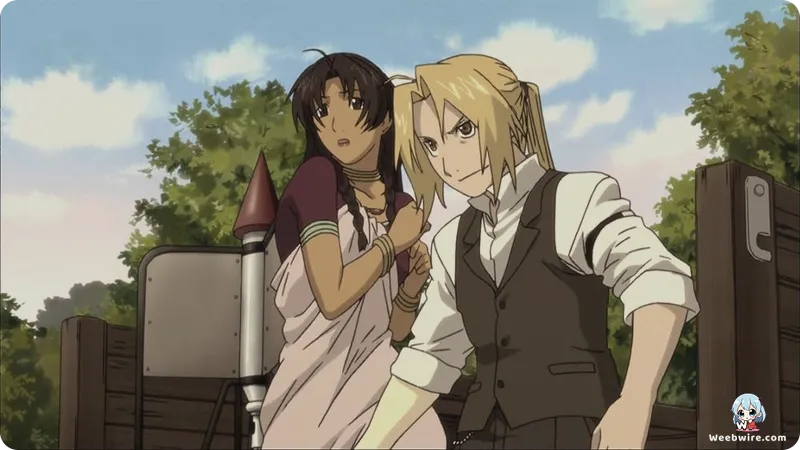Beyond Alchemy: The Controversial Historical Secrets Fueling Fullmetal Alchemist: Conqueror of Shamballa

Fullmetal Alchemist: The Movie – Conqueror of Shamballa, released in 2005, serves as the definitive cinematic conclusion to the original 2003 Fullmetal Alchemist anime continuity. More than a simple action sequel, the film delves into the consequences of the series finale, placing the Elric brothers' saga within a deeply unsettling, real-world historical framework. This approach cemented the film's reputation for making audacious and complex narrative choices, resolving the separation of Edward and Alphonse Elric while weaving in dark, esoteric historical trivia.
Adherence to the 2003 Continuity
A crucial aspect of Conqueror of Shamballa is its unwavering commitment to the 2003 series timeline. Unlike the later Brotherhood adaptation, the original anime sharply deviated from Hiromu Arakawa’s manga midway through. Consequently, the movie directly addresses the unique ending of that series: Edward's sacrifice left him stranded in our world, specifically 1923 Munich, while Alphonse was restored to his original body in Amestris.
This fundamental timeline divergence means that the nature of the Gate, the history of Amestris, and the existence of the Homunculi are specific to this continuity. This specificity often makes the film a confusing viewing experience for audiences familiar only with the manga-faithful Brotherhood. Studio Bones intentionally crafted this separation, establishing the 2003 narrative as a distinct, self-contained tragedy.
Integration of Historical Context
Perhaps the most compelling element of the movie is its meticulous integration of genuine, albeit fictionalized, historical horrors. The setting is not arbitrary; it is Munich during 1923, a period marked by significant social upheaval and political extremism immediately preceding the infamous Beer Hall Putsch. The film’s antagonists are strikingly grounded in history: members of the Thule Society, a real-life German occultist and völkisch group that played a formative role in the rise of the Nazi Party.

Director Seiji Mizushima and the production team undertook extensive research to authentically depict the architecture, political climate, and dress of the Weimar Republic. The Thule Society members are portrayed as fanatics obsessed with exploiting the dimension of Amestris, which they refer to as 'Shamballa.' They seek to harness this dimension as a source of limitless, untapped energy to fuel their global military and political ambitions. This allegorical critique of interwar nationalism and occult fascination elevates the movie beyond standard anime fare.
Fractured Identity and Metaphysical Links
The film also explores profound themes of fractured identity through the parallel existence of Alfons Heiderich. Trapped in our world, Edward encounters Alfons, a brilliant but sickly rocket scientist who bears a striking resemblance to Edward's original body. Alfons's German name is a near-homonym for 'Alphonse,' serving as a painful reminder to Edward of the body he sacrificed and the brother he left behind. Tragically, Alfons sacrifices his life to facilitate Edward's attempt to return to Amestris, echoing the cyclical nature of sacrifice prevalent in the 2003 continuity.
Furthermore, the movie reveals a dark and profound metaphysical connection: the energy driving Amestrian alchemy is sourced directly from the kinetic energy generated by the mass death toll of World War I in our world. This horrific equivalence, where human creation is fueled by massive human destruction, is central to understanding the climax, where the Thule Society attempts to weaponize the Gate.
The ultimate, bittersweet resolution sees Edward and Alphonse abandoning Amestris permanently to remain together in our reality. This final, tragic statement cements Conqueror of Shamballa as a unique, historically informed, and complex conclusion to the 2003 saga.
Credits
Fullmetal Alchemist: The Movie - Conqueror of Shamballa
Author
Hiromu Arakawa (Original Concept)
Cover Art
Yoshiyuki Itou (Character Designer)
Studio
Bones
Publisher
Square Enix
Producers





